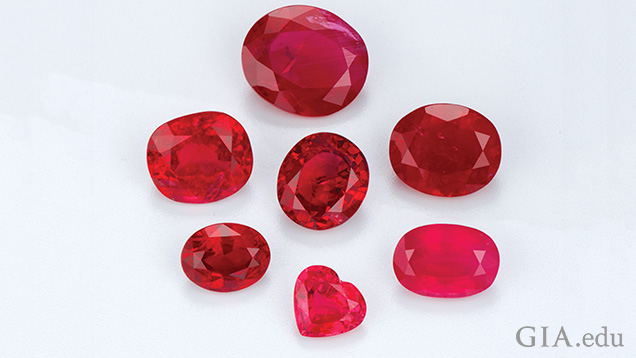Understanding Gem Treatments: What Every Jewelry Lover Should Know
- Brian Height
- Jun 29
- 3 min read
Updated: Jul 6
When you choose a gemstone—whether a sparkling diamond, a vibrant ruby, or a dazzling sapphire—it’s natural to want to know exactly what you’re getting. One important topic that often comes up is gem treatments. Many gemstones you’ll find in the market have been treated in some way to enhance their appearance, color, or durability. At Height’s Fine Jewelry, we believe in complete transparency and empowering you with knowledge, so you can confidently choose the perfect gem.
Let’s explore the most common types of treatments, what they mean, and how they might affect your gem’s beauty and care.

What Are Gem Treatments?
Gem treatments are processes that people use to change or improve a gemstone’s look after it comes from the earth. Beyond the natural shaping and polishing, treatments can enhance color, reduce visible flaws, or make the gem more durable.
It’s important to know that treatments are common and often accepted in the industry, but disclosure of any treatment is both legally required and vital for transparent buying. Different treatments may affect how you care for your jewelry and its long-term appearance.
Common Gem Treatments Explained
Heat Treatment
This is one of the oldest and most stable treatments. Gems like rubies and sapphires are carefully heated to high temperatures to deepen their color or improve clarity by reducing unwanted tones or inclusions.
Key points:
Heat treatment is durable and considered permanent.
Treated gems generally require no special care beyond normal cleaning.
Fracture or Cavity Filling
Surface cracks or cavities in stones like rubies, diamonds, or emeralds can be filled with glass, resin, or oils to hide imperfections and make the gem look clearer and more brilliant.
Key points:
Fillers improve appearance but may be affected by heat, chemicals, or pressure changes.
Special care includes avoiding exposure to heat (like a jeweler’s torch), harsh chemicals, or sudden pressure changes (such as flying).
Bleaching and Dyeing
Some porous gems and pearls are bleached to lighten colors or dyed to bring out vibrant hues. Pearls, jade, coral, and some quartz varieties often undergo these treatments.
Key points:
Bleached or dyed stones can be more delicate and sensitive to sunlight, chemicals, and cleaning agents.
Avoid prolonged exposure to heat, chemicals like acetone, or direct sunlight to maintain color.
Surface Coating
Some gems receive a thin coating or backing of color to improve or change their appearance. For example, topaz or diamonds might be coated to simulate a more desirable color.
Key points:
Coatings can wear off or scratch, so gentle handling is recommended.
Store coated jewelry carefully and avoid rough contact.
Irradiation
Gems like topaz or diamonds may be exposed to radiation to change or intensify their color, often followed by heat treatment to stabilize the hue.
Key points:
Many irradiated colors are stable under normal wear but may fade if exposed to high heat or prolonged sunlight.
Impregnation
Some porous stones like turquoise or jadeite are treated by infusing them with polymers or wax to enhance durability and appearance.
Key points:
Heat and chemicals can damage impregnated gems, so avoid extreme conditions.
High Pressure, High Temperature (HPHT) — Diamonds Only
HPHT treatment removes brown or yellowish tones from diamonds, improving color, sometimes making a stone appear colorless or a desirable fancy color.
Key points:
HPHT is permanent and stable under normal wear.
Detection requires advanced lab testing.
Laser Drilling — Diamonds Only
A laser creates a tiny channel to an inclusion inside a diamond, which is then cleaned to make the inclusion less visible.
Key points:
Treatment does not affect diamond durability.
Usually disclosed and detectable by gemologists.
Lattice Diffusion
An advanced treatment where elements like beryllium deeply penetrate the gem’s structure to alter or enhance color (common in sapphires and sometimes rubies).
Key points:
Considered permanent.
Can be difficult to detect without specialized testing.
Why Treatment Disclosure Matters
Knowing whether your gem has been treated helps you:
Understand its true value and rarity
Care for it properly to maintain its beauty
Make informed decisions aligned with your preferences and budget
Legally and ethically, sellers must disclose treatments, and at Height’s Fine Jewelry, we ensure full transparency. We want every client to feel valued and informed every step of the way.
Caring for Your Treated Gemstone Jewelry
Different thttp://world.Atreatments might require light additional care but, commonly:
Avoid harsh chemicals and excessive heat
Store jewelry separately to prevent scratches or damage
Clean with gentle, non-abrasive methods
Consult your jeweler for best care practices based on your gemstone’s treatment
Final Thoughts
Gem treatments are a natural part of the jewelry world. At Height’s Fine Jewelry, we’re here to guide you with clear, honest information, so your jewelry is not only exquisite but also genuinely understood and cherished.
Ready to explore our expertly curated collection or design your custom piece? Contact Height’s Fine Jewelry today—where expertise meets authenticity and your story becomes forever.




Comments